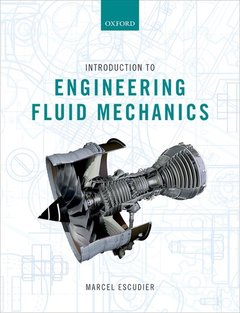Description
Introduction to Engineering Fluid Mechanics
Author: Escudier Marcel
Language: English
Subject for Introduction to Engineering Fluid Mechanics:
Introduction to Engineering Fluid Mechanics
Publication date: 11-2017
608 p. · 19x24.7 cm · Paperback
Publication date: 11-2017
608 p. · 19x24.7 cm · Paperback
Introduction to Engineering Fluid Mechanics
Publication date: 11-2017
608 p. · 19.6x24.8 cm · Hardback
Publication date: 11-2017
608 p. · 19.6x24.8 cm · Hardback
Description
/li>Biography
/li>
We inhabit a world of fluids, including air (a gas), water (a liquid), steam (vapour) and the numerous natural and synthetic fluids which are essential to modern-day life. Fluid mechanics concerns the way fluids flow in response to imposed stresses. The subject plays a central role in the education of students of mechanical engineering, as well as chemical engineers, aeronautical and aerospace engineers, and civil engineers. This textbook includes numerous examples of practical applications of the theoretical ideas presented, such as calculating the thrust of a jet engine, the shock- and expansion-wave patterns for supersonic flow over a diamond-shaped aerofoil, the forces created by liquid flow through a pipe bend and/or junction, and the power output of a gas turbine. The first ten chapters of the book are suitable for first-year undergraduates. The latter half covers material suitable for fluid-mechanics courses for upper-level students Although knowledge of calculus is essential, this text focuses on the underlying physics. The book emphasizes the role of dimensions and dimensional analysis, and includes more material on the flow of non-Newtonian liquids than is usual in a general book on fluid mechanics -- a reminder that the majority of synthetic liquids are non-Newtonian in character.
Marcel Escudier is Emeritus Harrison Professor of Mechanical Engineering at the University of Liverpool. From 1974 until 1986 he was Gruppenleiter für Strömungsmechanik at the Brown, Boveri Research Centre in Switzerland and then joined Schlumberger Cambridge Research in the UK as Head of the Fluid Mechanics Department. He has published research papers (about 60 in total) on turbulent boundary layers, burning plumes, vortex breakdown, and the flow of non-Newtonian liquids. He was elected a Fellow of the Royal Academy of Engineering in 2000.
© 2024 LAVOISIER S.A.S.




